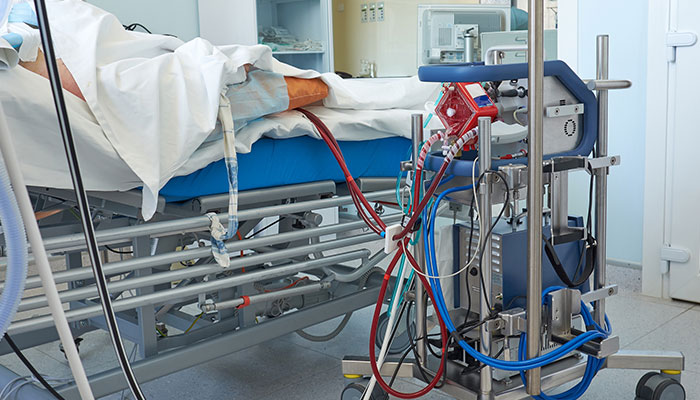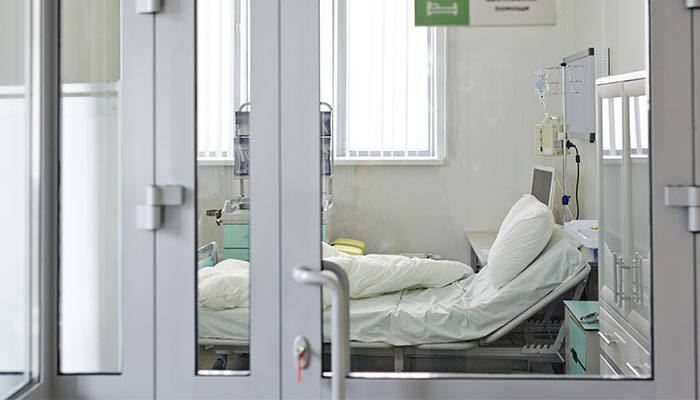Australia could potentially face the same fate as Italy, or worse, if it does not radically increase the number of ICU beds and take all available measures to rapidly decrease the rate of new Covid-19 cases, new modelling shows.

Conducted by Macquarie University in collaboration with a frontline careworker, the modelling predicts a scenario where Australia’s ICU capacity is overwhelmed within weeks, and an eventual mortality rate far higher than currently estimated.
Broadly supported by the data coming out of Lombardy in Italy, a coronavirus epicentre, the model predicts that if an exponential growth in community cases of the virus was to be prolonged, a ‘breaking point’ could occur where deaths start to rapidly increase not from the virus per se, but due to the unavailability of ICU beds.
“Our scenario is just one possible clinical scenario, but we are saying it is a plausible scenario because it mirrors what has happened in Italy,” said biostatistician Professor Mike Jones, Deputy Head of Research in Macquarie’s Psychology Department.
It is evidence that we need to be prepared for the possibility of a demand for ICU beds that we don’t have supply for.
Jones is co-author with anaesthetist Dr Hamish Meares of a paper published in the Medical Journal of Australia, When A System Breaks: A Queuing Theory Model for the Number of Intensive Care Beds Needed During the Covid-19 Pandemic.
“The model we based our numbers on posits exponential growth, which means frequent transmission, and so the best way to avoid that scenario occurring is less transmission, fewer people presenting to hospitals and therefore fewer people requiring support in ICU,” Jones said.
“The model is evidence that we need to be prepared for the possibility of a demand for ICU beds that we don’t have supply for.
“We need to be getting more ICU beds in the system.”
How deaths surge when beds run out
As of Monday morning (March 30) in NSW, the state with the most cases, 26 people suffering Covid-19 were in ICU, up from 10 patients just seven days prior.

Australia has about 2200 ICU beds. Based on a conservative 20 per cent daily increase of Covid-19 cases and 5 per cent of sufferers requiring 10 days in intensive care, the model predicts ICU capacity being exceeded at about 22,000 cases around 5 April, if public health measures fail to curb the growth rate.
Even suggestions that Australia could cope with 44,580 cases only grants an extension to 8 April, the researchers said.
The model places Australia at Day 14 of the pandemic as of March 25. From Day 1 to 14, it shows the death rate among hospitalised patients at a steady 8.8 per cent. From Day 15, the average mortality surges to 22.7 per cent – a figure supported by the real-life Italian data.
We pray the scenario we modelled on doesn’t come to pass – it is a plausible scenario we hope we can avoid.
“The authors’ conjecture is that initially the 8.8 per cent mortality is predominately from patients in ICU,” the paper states, “but from around Day 15 onwards, the increased demand for ICU beds outstrips the capacity of the system to supply them, and patients perish not from Covid-19 per se, but from lack of access to an ICU bed.”
The model doesn’t account for the non-Covid-19 patients who will also need intensive care during the pandemic, making implications for mortality even more dire if the rate of transmission is not curbed.
“We pray the scenario we modelled on doesn’t come to pass – it is a plausible scenario we hope we can avoid,” Jones said.
“It makes sense that any effort to slow down the rate of infection, is useful, and the initiatives the government is taking to bring down the rate is to try and prevent our scenario from occurring.
“If efforts to reduce transmissions become successful, then the curve becomes much less steep, and hopefully we don’t reach the saturation point in ICUs.”
Professor Mike Jones is Deputy Head of Research in Macquarie's Department of Psychology.



